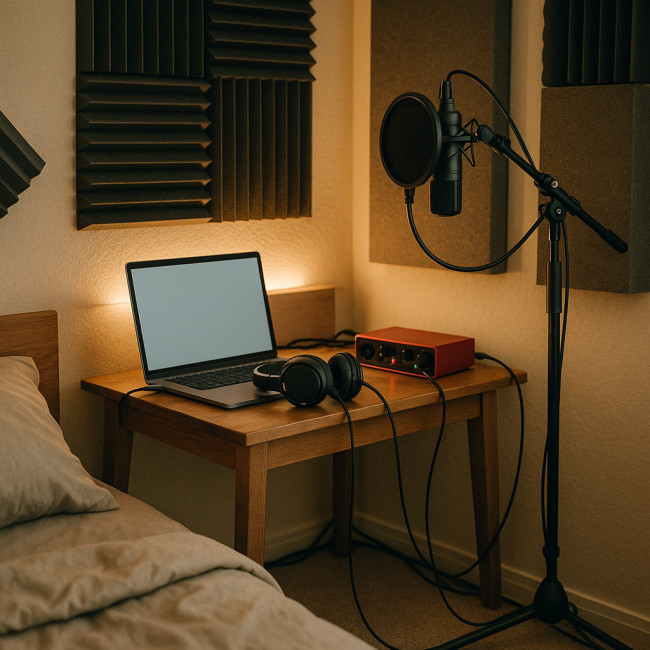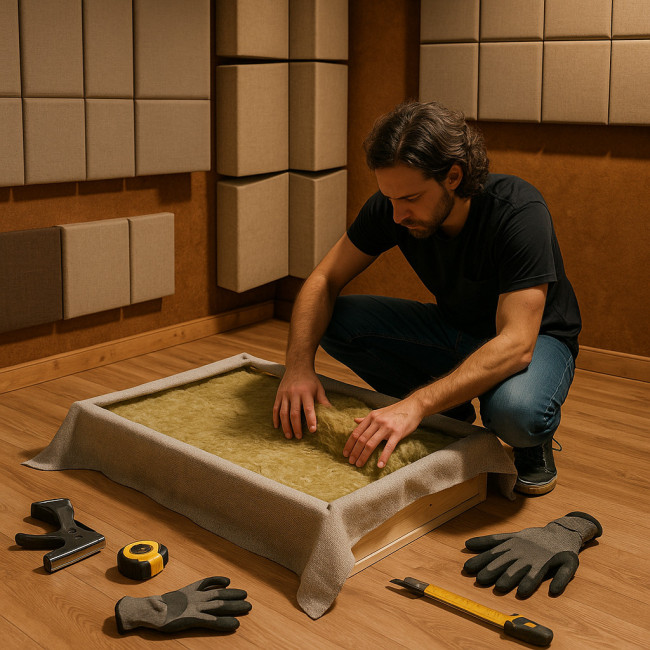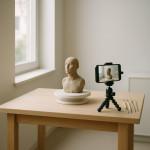Affordable audio-mix setups musicians can build in a single weekend
Dreaming of radio-ready mixes but strapped for time and cash? In 48 hours you can assemble a compact, great-sounding rig for under $600, fine-tune your room, and start producing tracks you'll be proud to share. This guide walks you through the gear list, the build timetable, and the optimisation tricks that turn any spare corner into a mini-mix suite.
Why build a weekend mix setup?
You save studio rental fees, learn your gear intimately, and stay creative whenever inspiration hits. A tight deadline also forces smart choices—no endless scrolling, just practical steps that work.
Core components under $600

Before you press the buy button, picture how each piece of gear interacts with the others. The interface converts analogue sound into binary code the DAW can sculpt; the microphone feeds that interface, translating your voice or guitar with clarity; headphones reveal mix flaws early, even in a noisy apartment; and acoustic panels prevent the room from colouring decisions. Together, these six items create a feedback loop of transparency: what you play is what you hear, and what you hear is what you tweak. By staying under the $600 ceiling you avoid analysis paralysis, enabling you to redirect saved cash toward songwriting courses, plug-in upgrades, or marketing campaigns once your tracks are ready for the world.
| Item | Average price (USD) | Why it matters |
|---|---|---|
| 2-in/2-out audio interface | $150 | Transparent conversion and low-latency monitoring |
| Large-diaphragm condenser microphone | $100 | Captures vocals & acoustic instruments with detail |
| Closed-back reference headphones | $75 | Accurate low-end without disturbing neighbours |
| Entry DAW licence | $99 | Full mix suite—EQ, compression, reverb, automation |
| DIY acoustic treatment pack | $80 | Tames reflections so EQ moves translate |
| Misc. cables & stands | $60 | Secure, noise-free signal flow |
Audio interface: brains of the operation
Models like the Focusrite Scarlett 2i2 or Audient EVO 4 deliver 24-bit/192 kHz recording, built-in preamps, and stable drivers. Plug-and-play simplicity means you're configuring in minutes—not hours.
Microphone: versatile and forgiving
The Audio-Technica AT2020 or Behringer B-1 offer a smooth frequency curve that flatters most voices. Pair with a basic pop filter and a shock mount to avoid low-frequency rumbles.
Headphones: honest monitoring on a budget
Closed-back cans such as the Sony MDR-7506 isolate you from room reflections. For extended sessions, breathable earpads prevent fatigue.
DAW: your digital mixing console
Reaper's full licence costs just $60 for personal use, while Cakewalk by BandLab is free. Both host third-party plug-ins and support advanced routing.
Acoustic treatment hacks
- Corner bass traps: fill laundry bags with rockwool and cover with fabric.
- Reflection panels: hang 5 cm acoustic foam at first-reflection points.
- Carpet + heavy curtains: reduce flutter echoes instantly.
Source : Sweetwater Street Prices 2024
Step-by-step weekend build plan

Two sun-up to sun-down sessions are all you need if you structure tasks logically. Morning one is for acquisition: pick up hardware, download installers, and verify serial numbers before brick-and-mortar stores close. Afternoon one is dedicated to ergonomics—building a solid workflow starts with cable management that eliminates hum and desk placement that respects the room's nodal patterns. Day two flips to the sensory side: mounting treatment, firing pink-noise sweeps, and mixing a song you have memorised to burn the new acoustic signature into muscle memory. Because each phase builds on the last, you never waste a minute re-doing work, and you end the weekend not with unfinished IKEA-looking panels but with a calibrated, session-ready zone that begs you to create.
Day 1 — Morning: order & download essentials
- Purchase or borrow the interface, microphone, headphones and cables.
- Download your chosen DAW and any free plug-ins you love.
- Back up installers to an external drive for future re-installs.
Day 1 — Afternoon: furniture & wiring
- Position desk against the shortest wall; this minimises early reflections.
- Run balanced TRS or XLR cables; avoid looping them near power bricks.
- Label everything—future you will thank you during late-night sessions.
Day 2 — Morning: acoustic treatment DIY
Measure your room, cut panels, and hang them using Command™ strips. Aim for symmetry around the listening position. A comforter draped behind you doubles as a broadband absorber.
Day 2 — Afternoon: calibration & test mix
Download a free room-analysis app like Room EQ Wizard. Sweep pink noise through your headphones, identify resonant peaks, and notch them with a linear EQ. Finish by mixing a familiar track—your ears adjust faster when you know every hi-hat.
Pro tips to stretch quality further
- Reference commercial tracks often and at low volumes to fight ear fatigue.
- Layer inexpensive plug-ins—stack two gentle compressors instead of slamming one.
- Leverage a budget self-recording guide to capture cleaner source audio that mixes easier.
- Plan remote shows with engaging virtual concert experiences so fans hear your new mixes live.
- Upgrade your profile with a musician bio that converts once your demo is ready.
- Stay inspired by reading creative advertising training articles that show how sonic branding meshes with visuals.
Mini-quiz: Are you studio-ready?
FAQ
- Do I need studio monitors for a weekend build?
- No. Quality closed-back headphones provide enough detail for mixing in untreated rooms. Add monitors later once you improve acoustics.
- Can I mix professionally with free plug-ins?
- Absolutely. Stock DAW effects cover EQ, compression, and reverb. Free third-party tools like TDR Nova and Valhalla Supermassive rival paid options.
- What sample rate should I choose?
- 48 kHz, 24-bit strikes a balance between fidelity and CPU load, and it's the standard for video sync.
- How much acoustic treatment is “enough”?
- Aim to cover at least 20 % of wall surface with broadband absorbers and all vertical corners with bass traps. Your frequency response will even out by 6–8 dB.
- Is Reaper really licence-free for 60 days?
- Yes. The developers offer a generous evaluation period so you can finish your first mixes before paying.
Ready to mix like a pro?
Set aside a single weekend, follow the checklist above, and your next release will showcase clarity and punch you once thought only possible in pricey studios. Share your progress with peers, iterate fast, and keep upgrading when budgets allow. Your future fans—and collaborators—are waiting to hit play.











